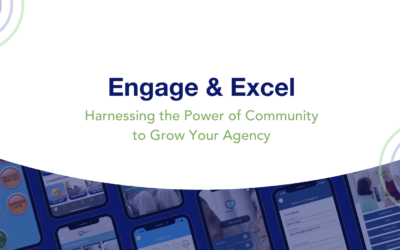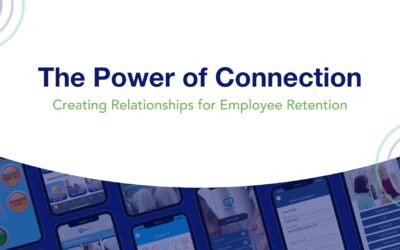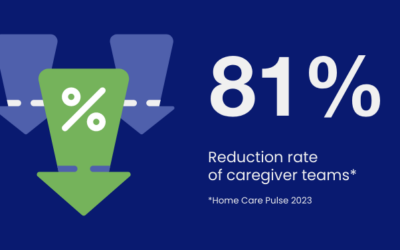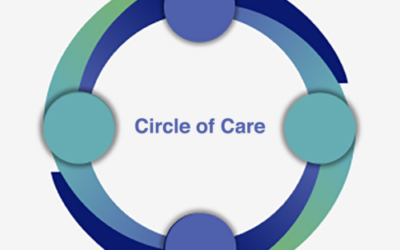Caregiver turnover rose again this year, according to the most recent Activated Insights Annual Benchmarking Report, and at 79.2%, turnover rates are nearing the highs we saw in 2018.
So how can you keep your caregivers and reverse the rising tide of caregiver turnover?
By solving their number one complaint: lack of communication. Here’s how you can improve caregiver communication:
- Start off on the right foot
- Make communication a two-way street
- Get the whole team involved
- Remove friction to communication
- Incentivize participation
1. Start off on the right foot.
It’s easier to start a good habit than to break a bad habit and replace it with a new one. Hiring and onboarding sets the tone for the rest of your caregiver’s relationship with your agency, so make it a priority to model the behavior you’d like to see from the very first interactions with your caregivers.
Starting from when you first begin interviewing in-home caregivers, ensure you are demonstrating the kind of professionalism and open communication you’d like them to carry through their entire career with your agency. That means setting clear expectations on when they will hear from you and following through. Caregivers who have a more professional perception of your agency are more likely to improve their behavior to meet the standard you set with your actions—not just your words.
Part of successfully onboarding professional caregivers should be introducing them to all of your communication tools. Explain to them which channel should be used for what purposes, then ask them to send you a practice message to ensure they understand how to use each tool.
For more on onboarding for long-term retention, check out our free 90 Day Retention Guide here!
2. Make communication a two-way street.
Many employers, not just in home care, make the mistake of setting an “open door policy” and assuming that will be sufficient for employees to reach out to them with any questions or concerns.
In reality, the majority of your caregivers will not proactively reach out to you when they’re experiencing issues; they’re much more likely to just accept a position with a competitor and move on. An open door policy is not the same as an active invitation to engage. To create real opportunities for your caregivers to speak up, ensure you’re soliciting – and even incentivizing – feedback.
An easily accessible survey asking caregivers about their experience in 5 questions or fewer is a great way to accomplish this. Since caregivers are generally on the go, ensure your surveys are mobile-optimized.
3. Get the whole team involved.
How many of your office staff do your caregivers hear from on a regular basis? One scheduler, maybe the occasional message from an HR representative? In order to create connection with caregivers, give your caregivers a team they can feel connected to.
Give multiple team members reasons to reach out to your caregivers. Consider supplying your schedulers with a stash of gift cards to distribute to caregivers as a thank you for taking last-minute shifts. When your salesperson or marketer hears great feedback from a satisfied client, encourage them to personally reach out to the caregiver to thank them for their great work. Schedule an hour in your calendar once a month, or even once a quarter, to write a few handwritten thank you cards to show your appreciation for your team’s hard work.
It takes a little extra effort to make the ultimate remote worker feel like they are part of a team, but it’s not difficult with a little planning!
4. Remove communication friction.
One of the most common reasons your caregivers aren’t communicating? It’s difficult! We frequently speak to agency owners who have had caregivers Google the number to their office and end up calling the corporate franchisor by accident.
Your caregivers are out in the field, in your clients’ homes. It’s unlikely they’re toting their employee handbook along with them, and they don’t have time to try to navigate difficult software from a small mobile phone screen. If it takes more than a few taps on their phone to reach out, you’re unlikely to hear from them.
When you’re setting up communication channels for your caregivers, ensure they’re easy to navigate and mobile-friendly. Many of our customers use Hot Buttons in their mobile app. These Hot Buttons, labeled for different situations like incident reports or running late, connect their caregivers with the right person in the office with a single tap.
5. Incentivize participation.
It takes time and effort to build a habit like communication – so make it rewarding! Especially when you’re first rolling out new communication initiatives, it helps to incentivize your caregivers to get involved.
This doesn’t need to be complicated or expensive. If you utilize feedback surveys, you can hold a drawing once a month or quarter for a prize. Every time an employee fills out a survey, they get an entry. One of our customers hosted a contest in his app, asking caregivers to share more about their reason for entering the field, then asked a panel of judges to select the best answers.
Bringing it All Together
At the end of the day, your caregivers can’t communicate with you if they don’t know how. Make it clear, rewarding, and – most importantly – easy.
The best way to do that is to keep all of your communication tools in one central hub that caregivers can access on the go. An enCappture mobile app makes this easy, with built-in tools like Hot Buttons, forms, surveys, and more; reach out to our team of mobile experts to get started!











